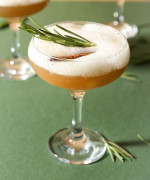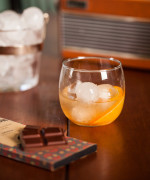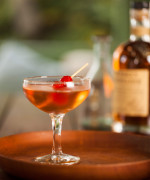A beginner’s guide to one of the world’s favourite spirits.
Feel as though the wonders of whisky have passed you by? Not sure you know your single malts from your blends or bourbons? Or even if you should be drinking whisky or whiskey? Here then, just for you, is a beginner’s guide to one of the world’s favourite spirits.
There seems to come a point in every person’s life when they realise the clock is ticking, they’re not as young as they used to be and it’s time to make important life decisions – like starting to drink whisky.
It seems a crucial rite of passage. All around you, you see your friends making the change, gradually becoming singleminded obsessives capable of debating the pros and cons of bourbon over rye for hours, and swearing blind the only true whisky is made by blind monks in the outer Hebrides on the first full moon of winter – or similar.
Want to join the debate but not sure where to start? We’re here to help. Encyclopedias could, and probably have been written on the subject; the subtleties and sub-categories of each region, each grain, blend and barrel. But here we’ll try to, ahem, distill it down to the basics.
Need to know
Whisky can only be called such if it’s been aged in oak, although the minimum length of time varies country to country. And whisky does not mature in the bottle. The age of a whisky is the time between distilling and bottling, which is where the oak cask interacts with the liquid changing its make-up and taste.
But older isn’t automatically better.
“That’s a misconception,” says Matt Bradley whisky ambassador for Hancocks, suppliers of Jack Daniel’s. “Different whiskies will age differently. They’ll age differently in different climates for example. Generally they’ll age faster in warmer areas like the American south and slower where it’s colder, such as Scotland,” he says.
“I’ve tasted 40- to 60-year old whiskies that were incredible, and others that weren’t. There’s an optimal point in the ageing process and beyond that it’s not going to improve any more.”
Single malt whisky comes from a single distillery and is made from a mash using only one malted grain. Blended whisky, as the name suggests, is a blend of different whiskies from different distilleries. But you can also get a blended single malt which is a mixture of single malts from different distilleries.
When you’re a novice it’s best to try a range of whiskies with an open mind to discover the range of flavours the spirit offers, says Colin Scott, master blender for Chivas Regal. “They’re all different and therefore appeal to people’s different tastes.”
How to drink it
Pour your dram and let it sit for 20 minutes, suggests Bradley, so it’s at room temperature. “Like a really good glass of pinot.”
But, he adds, mixers aren’t out of the question. “Especially if you’re out for a few drinks with your mates; you’re not going to sip neat whisky.” And if you must mix, your best option is probably ginger ale or soda water, he says.
“The important thing with whisky is to enjoy it the way you prefer,” says Scott, but he recommends the addition of a splash of bottled water to soften some of the peppery characters of the alcohol and bring out the flavours of the spirit.
His advice for your first taste is: “Pour a measure of the whisky into a rocks glass and take a nose of the aromas, then sip. You’ll find a slightly hot mouthfeel on your tongue from the alcohol, but as your mouth reacts to that you’ll start to notice more characters. Now add some bottled still water – up to 50/50 with the whisky – and take a mouthful. Hold the whisky in your mouth without the aggression of alcohol before swallowing and the flavours will fill your senses.”
Classic Whisky Cocktails
The very existence of this section in our focus on whisky will have purists up in arms. There are those who insist it must be drunk neat – no ice or water, let alone with pollutants such as mixers. But the first rule of whisky drinking is really that there are no rules. And a good, classic whisky cocktail may be just the thing to break the ice, if you will, on your whisky adventures. The key to drinking the spirit this way, says Matt Bradley, is making sure it remains front and centre of the cocktail. “It shouldn’t be about disguising the spirit but enhancing and showcasing it.

Irish Whiskey Sour

Ghost Old Fashioned




